The Kurds in Syria, who were significant allies to the West in the war against ISIS, are currently under American and Western pressure to encourage their integration into the new Syrian state under Ahmad al-Sharaa, a regime in which jihadist currents and armed forces play a major role, as was expressed in the events against the Alawites in the Syrian coastal sector in March 2025, and against the Druze in As-Suwayda in July 2025.
The US decision to begin a process of reducing forces in northeastern Syria in April 2025, which appears as a lack of readiness to support the Kurds, could evolve into an effective abandonment of a loyal ally for the sake of an interest to reconcile with the new Sunni regime and open a new page with it.
Although this turn of events may be driven by a desire for regional stability and a reduction of military presence, the possible surrender of a key strategic ally that constitutes a proven non-jihadist counterweight, which may also help to contain the Shiite axis that is trying to return and be relevant in the region, will likely be felt in the coming years.
Since the March 2025 agreement between the Kurds and Damascus, the contradiction between the new Syrian regime’s aspiration for centralized control and the Syrian Kurds’ demand for autonomy has not been effectively resolved. The involvement of Turkey, the main ally and military supporter of Al-Sharaa, and a bitter enemy of the Kurds’ aspirations in northern Syria, further complicates the situation.
It appears as if the United States’ decision to cooperate with the Al-Sharaa regime and reduce its support for the Syrian Democratic Forces (SDF) is based on a naive and dangerous assumption that the Al-Sharaa regime will carry out a true reform in Syria.
Should Western countries reconsider the “Unified Syria” framework and instead, adopt a policy of strategic preservation of the Syrian Kurds? Perhaps this approach will allow the West to maintain a decisive lever against hostile actors and protect its long-term interests in a region where what is stable is the instability…
The Kurds as an Anti-Jihadist Strategic Force
For almost a decade, the Syrian Kurds, operating through the Syrian Democratic Forces (SDF), were the most reliable and effective partners of the West in general and the US in particular in the struggle against the Islamic State (ISIS). With significant support from the coalition led by the United States, the SDF conducted a difficult and attritional ground combat campaign that culminated in the territorial defeat of ISIS in Syria in March 2019. The SDF and its political arm, the Democratic Autonomous Administration of North and East Syria (DAANES), presented a vision for a secular, democratic, and federal Syria, which stands in complete contrast to the ideologies of a variety of Sunni jihadist organizations in Syria, including ISIS and other armed factions, some of which were integrated into the new Syrian army.
Despite this critical role, the West’s relations with the Syrian Kurds were always characterized by a tactical, not strategic, calculus. The alliance was transactional, and focused on the single and immediate goal of destroying ISIS. The subsequent reduction of the Western military presence and the diplomatic turn towards the Al-Sharaa regime demonstrate a failure to translate this tactical partnership into a continuous strategic commitment.
The West, and especially the United States, never fully invested in the long-term political aspirations of the Kurds for autonomy. The current American policy of supporting the “integration” of the SDF into the new Syrian army confirms this transactional approach, as it prefers the abstract goal of a “unified and stable state” and “regional stability,” despite the many warning signs stemming from the nature of Al-Sharaa’s new regime.
The Strategic Value of “Rojava”: A Lever and a Buffer Zone
The area controlled by the Kurds in northeastern Syria, often called “Rojava,” has immense strategic value that is now on the line. It is a resource-rich area that controls key oil and gas fields, including those in the Deir Ezzor governorate, which are vital for the economic sustainability of the Syrian state. More importantly, the territorial control and military capability of the SDF served as a physical and ideological buffer zone against the expansion of Iran and its proxies in the various Shiite axis, as well as against a potential resurgence of ISIS.
By reducing its military presence and encouraging the Kurds to integrate with the new regime in Damascus, the US is giving up influence in this vital area to a regime with a dubious ideological basis and equally dubious pattern of action.
The Al-Sharaa regime, which seeks to reclaim full sovereignty and rebuild the state, sees the areas under Kurdish control and their energy resources as having supreme importance. Therefore, this policy effectively hands over a crucial area and its resources to a force that may be hostile to the West and Israel in the future.
This is a clear case of a ‘missed opportunity,’ as the West is giving up a powerful lever and a strategic buffer zone that have proven their value against jihadist threats in the past. The West is sacrificing a position of power for a diplomatic outcome that is far from guaranteed and will likely empower new rivals.
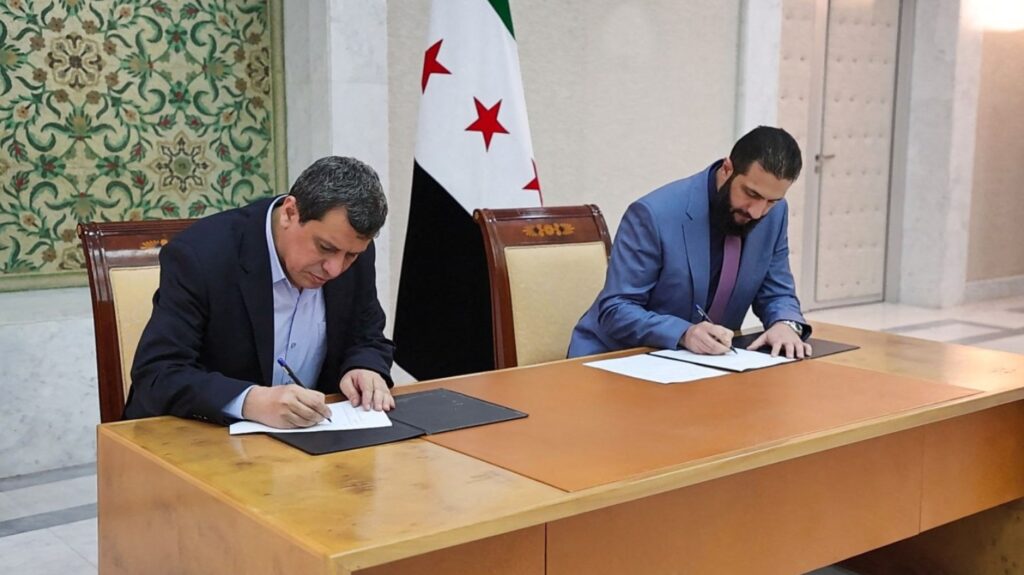
The Fraying Agreement: An Analysis of the March 2025 Agreement
The agreement signed on March 10, 2025, between the SDF and the Al-Sharaa regime was presented as a historic step toward national unity. However, a chronological analysis of the events that followed reveals a process that can be defined as friction and mutual suspicion instead of real progress:
- March 10, 2025: The agreement was officially signed, and it describes the integration of SDF forces and institutions into the new Syrian state.
- April 4, 2025: First signs of implementation appear with a prisoner exchange and a cautious withdrawal of SDF fighters from specific neighborhoods in Aleppo, but this is a limited gesture, not full integration.
- May 13, 2025: In a move that directly contradicts the spirit of the agreement, the SDF sends massive military reinforcements to the Deir Ezzor area to “fill the security vacuum” left as a result of the extensive withdrawal of American coalition forces. The Kurdish forces also hold more than a thousand fighters in Aleppo despite the agreement with Damascus.
- June 18, 2025: The American military presence is further reduced with the evacuation of two bases in northeastern Syria, and the SDF commander, Mazloum Abdi, warns of a significant strengthening of ISIS, which indicates that the agreement has not led to a functional and unified security mechanism.
- July 14, 2025: In a public statement that undermines the entire premise of the agreement, PKK leader Abdullah Ocalan, through his brother, declares that the SDF will not lay down its arms in the Syrian arena, and emphasizes the unique nature of the conflict in Syria.
- July 26, 2025: The SDF officially begins handing over civilian institutions in areas like Hasakah and Deir Ezzor but at the same time emphasizes that it has no intention of dismantling its military structure or autonomous administration. This highlights the fundamental disagreement regarding the meaning of the term “integration.”
- August 2, 2025: Tensions rise as clashes break out between the SDF and the Syrian army near Manbij, east of Aleppo.
- First week of September 2025: SDF forces met with regime representatives in northeastern Syria with the goal of reviving the April agreement and lowering tensions. The parties agreed to a halt of military reinforcements and the establishment of joint committees, and to implement measures for the protection of civilians for the sake of stability. The SDF commander, Mazloum Abdi, also met with the commander of the American CENTCOM, Admiral Brad Cooper, and received a promise for continued American assistance in the fight against terrorism (i.e., ISIS) and the protection of ISIS detention camps under SDF control.
The fundamental problem with the March 2025 agreement lies in the irreconcilable definitions of “integration” held by both sides. The main goal of the Al-Sharaa regime, as the new central government, is to re-establish a centralized, sovereign state and a monopoly on force in all Syrian territories. From this point of view, “integration” means the complete dismantling of the SDF and its absorption into a single, unified national army under central command.
The SDF, on the other hand, and even more so after the massacre of the Alawites in March 2025 and the massacre of the Druze in July 2025, holds an opposing vision. It has publicly declared that it views integration as “democratic integration” that preserves its military and administrative structures within a new, federal Syrian state. This difference is existential. The Al-Sharaa regime’s demand for demilitarization is seen by the SDF as an act of “submission and subjugation.”
The Turkish Factor
Turkey’s unequivocal position, according to which the SDF is a terrorist entity and an extension of the Kurdistan Workers’ Party (PKK), and Turkey’s status as the main sponsor of the new Al-Sharaa regime, makes Ankara a key player in northern Syria.
From Turkey’s perspective, the existence of a well-equipped, self-governing Kurdish entity near its border is a significant threat to the state’s unity. This ideological and security position is non-negotiable, and it has been expressed in a series of military operations, including “Operation Dawn of Freedom” and “Operation Manbij,” whose goal was to expand Turkish-controlled territory and prevent any form of Kurdish autonomy in post-Assad Syria.
In addition, the rebel organization – the Syrian National Army (SNA) – has been significantly absorbed into the new Syrian army, is supported by Turkey and actively fights the SDF. This support continued after the fall of Assad, with Turkey providing military assistance to the new Al-Sharaa regime.
The Turkish involvement in Syria is not defensive only, since President Erdogan sees Syria as a playground for implementing a neo-Ottoman and Islamist vision, in which Turkey returns to its historical status as a caliphate and a core entity in the Muslim world. The Kurds are seen as a bothersome obstacle on the path to this vision.
The Israeli Model
Israel’s policy toward the Druze minority in southern Syria provides a practical model for an American policy toward the Syrian Kurds, but it is doubtful whether this will be realized. When the forces of the Al-Sharaa regime carried out a massacre of the Druze minority in As-Suwayda in July 2025, Israel responded with a swift and decisive military action, including airstrikes against Syrian military command centers and against the presidential palace in Damascus.
This intervention was a clear rejection of the West’s call for restraint and a firm declaration of Israel’s new security doctrine, which gives priority to preventing a buildup of power by hostile forces near its border (in this case, south of Damascus), and for a proactive defense of friendly, non-jihadist minorities from a hostile central power.
Israel’s actions were driven by a long-standing alliance with the Druze, a clear understanding of the dubious ideological roots of the new regime, and the need to maintain a buffer zone free of hostile forces.
The Syrian Kurds share many key characteristics with the Druze. They are a secular and non-jihadist minority with a distinct identity, and they were reliable allies of the West and its partners in the region. Their strategic location provides a natural buffer zone against hostile forces, and they now face a similar threat from the same regime that attacked the Druze.
Summary
Based on this precedent, a new policy of cooperation with the Syrian Kurds is not only justified but also strategically necessary for the West in general and the US in particular, even though for now it is clear that the US administration has chosen a different path.
It may be necessary to examine a new security doctrine that rejects the “Unified Syria” model. The goal should be the strategic preservation of the SDF and the Kurdish Autonomous Administration, and ensuring that they maintain the military capability needed to serve as a buffer zone against a resurgence of ISIS and the potentially hostile Al-Sharaa regime, and against renewed Iranian attempts to take root in northern Syria. Exerting pressure on the SDF to disarm is a strategic mistake that must be reversed.
It is possible to examine and develop a new cooperation model for the Kurds that reflects Israel’s approach with the Druze. This would include a discreet and unofficial policy of support – political, economic, and intelligence-based – that would strengthen the Kurds without granting them formal recognition or violating the nominal sovereignty of the new Syrian state. This approach is low-profile but has a high impact, and it offers the Kurds the resources they need to defend themselves without inviting a broader war.
The preservation of an autonomous Kurdish entity can serve as a crucial bargaining chip for the West in future negotiations with the Al-Sharaa regime. The continued control of the SDF over critical oil and water resources provides significant leverage that must be preserved, and not given up. In our assessment, this will provide the West with a means of exerting pressure on the new regime and its supporters and will ensure a decisive counterweight to a state that may be hostile.
Sources:
- https://www.thenationalnews.com/news/mena/2025/07/22/syrias-kurdish-fighters-say-laying-down-arms-impossible/
- https://en.wikipedia.org/wiki/Syrian_Democratic_Forces
- https://www.foreign.senate.gov/press/dem/release/readout-ranking-member-shaheens-travel-to-syria-and-meeting-with-president-ahmed-al-sharaa
- https://www.pbs.org/newshour/show/amid-a-violent-week-in-syria-a-look-at-the-stability-of-the-new-government
- https://www.pbs.org/wgbh/frontline/article/us-diplomats-meeting-syria-jihadist-turned-statesman-ahmad-al-sharaa/
- https://en.wikipedia.org/wiki/Syria%E2%80%93United_States_relations
- https://apnews.com/article/syria-israel-diplomacy-conflict-us-e3fd86d0e2a011e6eba6dea8977bc084
- https://www.congress.gov/crs-product/IN12473
- (https://en.wikipedia.org/wiki/Turkish_offensive_into_northeastern_Syria_(2024%E2%80%932025)
- (https://en.wikipedia.org/wiki/Turkish_occupation_of_northern_Syria)
- (https://english.aawsat.com/arab-world/5151510-t%C3%BCrkiye-denies-direct-talks-sdf-demands-full-disarmament)
- https://www.kurdistan24.net/en/story/828282/turkish-fm-sdf-must-dissolve-before-we-launch-a-military-operation
- https://www.mei.edu/publications/damascus-sdf-agreement-two-months-fragile-progress-or-delayed-collapse
- https://www.swp-berlin.org/publikation/the-political-transition-in-syria-regional-and-international-interests
- https://hawarnews.com/en/sdf-leadership-member-outlines-conditions-for-integration
- https://www.madamasr.com/en/2025/08/28/feature/politics/the-new-syria-under-israeli-american-construction/
- https://en.wikipedia.org/wiki/Deir_ez-Zor_Governorate
- https://thecradle.co/articles-id/2165



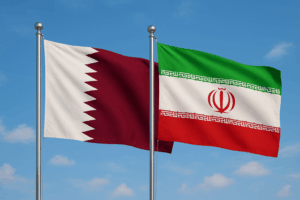
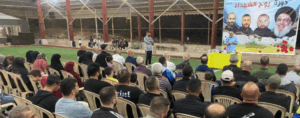
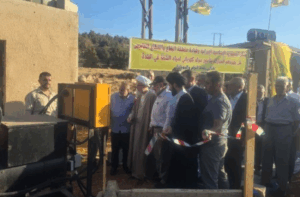
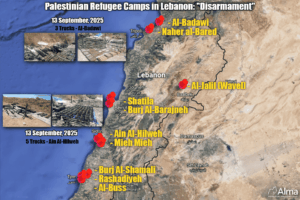
One Response
Dear Yaakov,
I very much agree we need to make a definitive long term strategic plan in support of our Kurdish and Druze allies in the region.
I suggest the restoration of the nation state of Kurdistan in a comprehensive plan to redefine the borders of the entire region. The Druze communities should be consulted to determine their own future without being persecuted and oppressed by jihaddist radicals. Erdogan needs to learn from the Ayatollah’s failed delusions: that he should be taking care of his own countrymen instead of funding and seeking delusional empires.